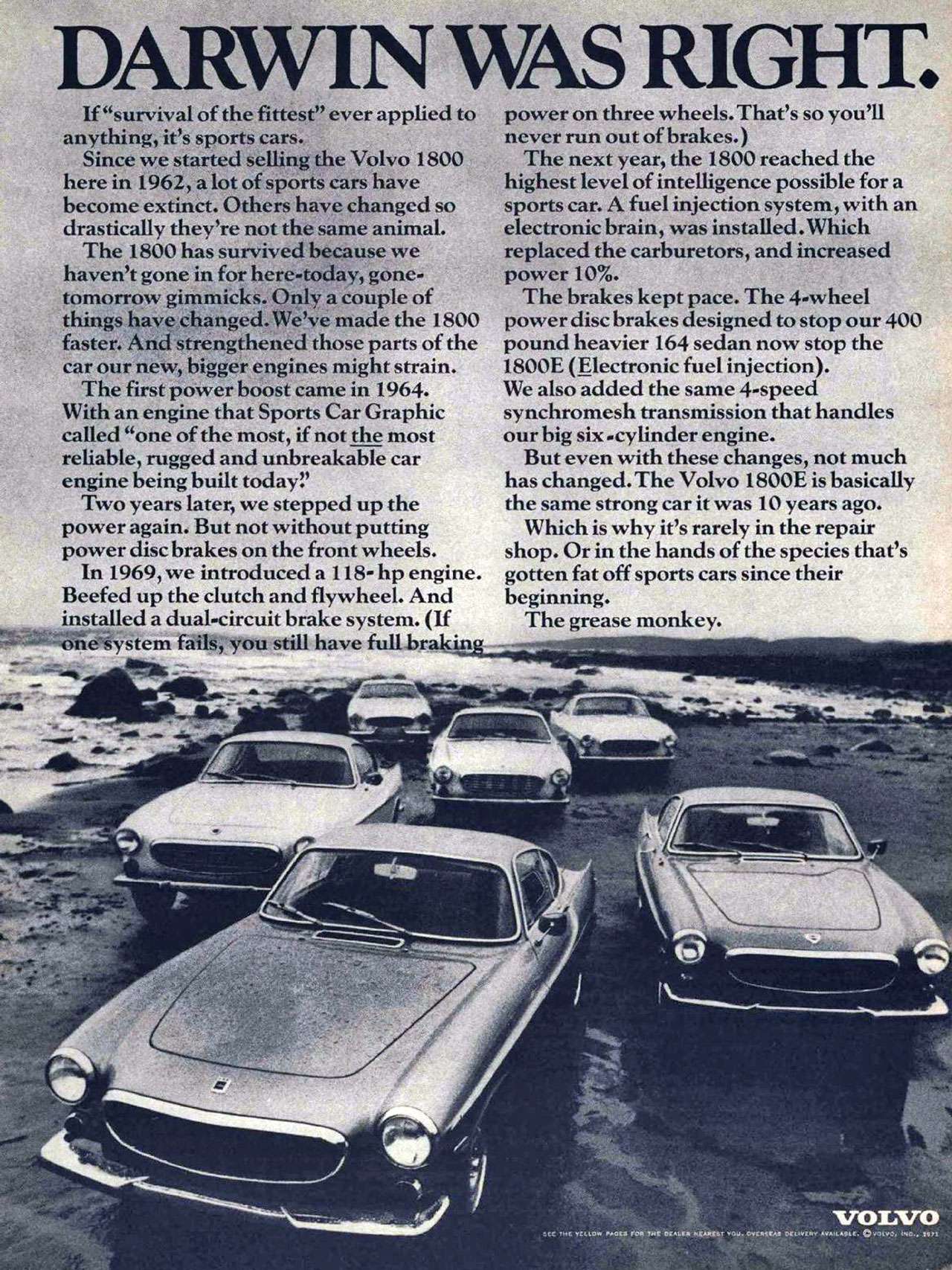
Darwin was right. If "survival of the fittest" ever applied to anything, it's sports cars. Since we started selling the Volvo 1800 here in 1962, a lot of sports cars have become extinct. Others have changed so drastically they're not the same animal.

Tags:
Carros,
Propagandas de Carros,
Publicidade,
Volvo
Publicado: sexta-feira, 22 de janeiro de 2016 às 17:28
Permalink:
Copiar
Link copiado para a área de transferência!
Houve um erro ao copiar o link para a área de transferência.
Assinar:
Postar comentários (Atom)

Postar um comentário